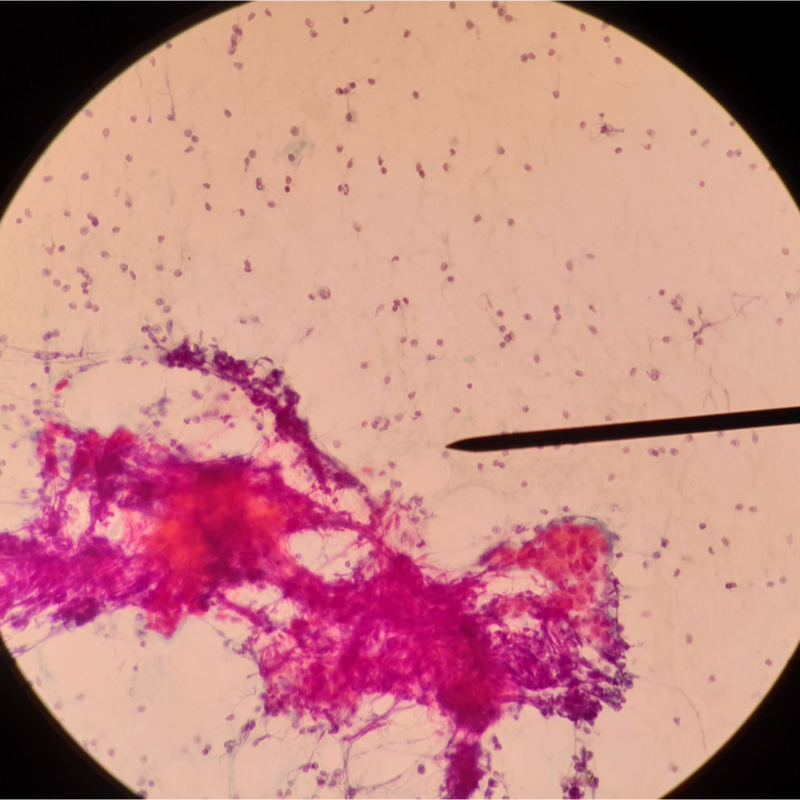
What is a Warthin tumour?
Warthin tumour is the name given to a benign tumour of the parotid gland. It is also called cystadenolymphoma and usually arises from the lymphatic tissue of the caudal part of the parotid gland. A Warthin tumour can occur on both sides. In 20 percent of all cases, a Warthin tumour can also have several foci of disease (multifocal) and take on a diameter of a few millimetres to a few centimetres. Along with pleomorphic adenoma, Warthin's tumour is one of the second most common benign salivary gland tumours. Rather rarely, the Warthin tumour affects neighbouring lymph nodes and mutates into a malignant cancer.
What causes a Warthin tumour?
A Warthin tumour develops mainly because of smoking. Doctors believe that smokers have an eight times higher risk of developing a Warthin tumour than non-smokers. But age is also a risk factor. Warthin tumours develop with above-average frequency in patients in the 5th and 6th decade of life. In addition, the following causes can contribute to the development of a Warthin tumour:
- Radiation,
- Contact with irritating chemical substances,
- chronic inflammation of the oral cavity,
- genetic disposition
Some
studies indicate that fusion genes
between chromosome 11 and choromosome 19 are present for the development of Warthin tumour.
How can a Warthin tumour be prevented?
Should the patient notice swelling of the parotid gland, it is advisable to consult an ENT specialist. As the tumour is linked to tobacco use, it is also advisable to stop smoking .
What symptoms can a Warthin tumour cause?
A Warthin tumour manifests itself as a small, oval or rounded lump that is usually not painful and grows slowly. However, in 90 percent of all cases, a Warthin tumour behaves asymptomatically . In rather rare cases, the Warthin tumour causes minor pain and may be accompanied by ringing in the ears, earache, hoarseness and/or shortness of breath. Some patients also complain of a hearing loss. If the tumour tissue has become inflamed, patients complain of very severe pain, which can be explained by, among other things, compression of the facial nerve. In very rare cases, facial paralysis can also occur.
Is the Warthin tumour dangerous?
Although Warthin's tumour is in most cases a benign disease, it can nevertheless press on the arteries that are responsible for the blood supply to the brain, or on the facial nerve . This can lead to either an undersupply of oxygen to the brain or facial paralysis.
How is a Warthin tumour diagnosed?
A Warthin tumour can be discovered during a self-examination, for example as a rounded lump under the skin, or diagnosed by a doctor based on complaints. Within the medical diagnosis, palpation, a manual palpation of the organs and structures lying under the skin is carried out. Imaging procedures such as an ultrasound examination (sonography) can also be carried out . It is also advisable to take a tissue sample (biopsy), to rule out the presence of a malignant tumour. In more than 95 percent of all cases, a fine-needle biopsy can be used to make a definite diagnosis. At the time of diagnosis, the Warthin tumour has usually reached a size between two and four centimetres. In rare cases, the tumour can also reach a diameter of twelve or thirteen centimetres.
How is a Warthin tumour treated?
The Warthin tumour is usually removed surgically. As a rule, this is a relatively easy surgical procedure because the tumour has a favourable, superficial location and can be easily separated from the surrounding tissue. Various techniques can be used for the operation, which may vary depending on the location of the tumour. In most cases, the so-called parotidectomy is used. This is a partial or total removal (resection) of the parotid gland. In this way, the risk of a recurrence can be minimised.
What is the aftercare for a Warthin tumour?
In the case of a benign Warthin tumour, one follow-up examination directly following the operation is sufficient. During this check-up the healing of the wound is checked. If there were no complications during the operation, such as injury to the facial nerve, there is no need for further check-ups. On average, it takes about four weeks for the pain caused by the operation to subside. possible numbness of the earlobe may last longer. The recovery of the facial nerve usually takes between six to three months. The surgical scar also heals in this time period. However, redness of the scar may persist for up to six months after the surgery .
What is the prognosis for a Warthin tumour?
Since Warthin's tumour is a benign disease , the prognosis is quite good. However, complications can occur during the surgical removal of the Warthin tumour, which can result in damage to the facial nerve. If the operation goes without complications, the prognosis is favourable. This is because a Warthin tumour only forms again in extremely rare cases. A mutation to a malignant cancer does not often occur either .
However, since a tumour disease is always a psychological burden for the patient, it is recommended that the affected person contact a therapist or a self-help group as early as possible. Here, the disease can be psychologically worked through, but also individual experiences can be exchanged among the patients . The goal here is for the patient to quickly find his way back into his usual life. The German Cancer Society, but also the ENT doctor treating the patient, can provide assistance in this regard .
